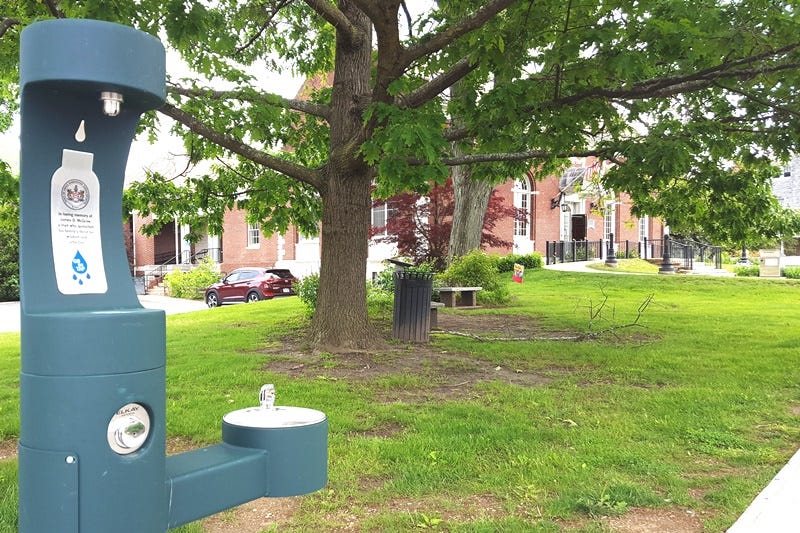Bottled Water (H2No)
“The Armchair Environmentalist is filled with wisdom for those who want to live an environmentally responsible life. For example, simply saying no to bottled water will save energy and measurably reduce carbon emissions. Christensen has incorporated more environmental advice in this crisp, tightly written volume than in anything I’ve seen to date.” —Lester R. Brown, founder of the Worldwatch Institute
I was behind a tourist at the supermarket in August and she was complaining about the fact that Great Barrington doesn’t allow the sale of single-use, single-serving bottled water. It always surprises me that people are still drinking out of those nasty, filmy plastic bottles when there are so many refillable bottles available - even the top-notch ones are reasonably priced and have all kinds of sophisticated features. I started writing about the waste involved in shipping water very early, which is why Lester Brown highlighted that detail when he wrote a blurb.
There was quite a bottle battle in Great Barrington, and it hasn’t been cheap: this isn’t just a matter of banning something. The town then installed water stations like those you see in airports, where you can get a drink from the fountain or fill your own bottle. The one pictured above is in front of the library. (Yes, during the COVID-19 lockdown, the town did allow bottled water sales, as well as plastic shopping bags. But we’re back to business as normal now. The water stations have to be turned off during the winter, too.)
Bottled Water: H2No
From The Armchair Environmentalist
. . .The standard of public water supplies in developed countries is high. Bottled water may taste good, but it’s bad news for the environment because of the energy used to process and transport it. Tests show that bottled water is no purer than water from your tap—and it’s sometimes less pure. If you must buy bottled water, choose large glass bottles (water bottled in plastic absorbs a certain amount of carcinfogenic polymers), and recycle them. If you like to carry water, reuse a bottle or buy a good-quality water bottle at an outdoor sports shop and refill it often. Keep filled bottles in the fridge for a quick exit. A stainless steel Thermos bottle will keep water icy cold on even the hottest day.
However, public drinking water has issues, many of them related to high-chemical agriculture. Potential cancer-causing disinfectant byproducts (DBPs) also can be found in water supplies; DBPs include trihalomethanes, which are formed when chlorine reacts with organic matter such as decaying leaves.
For the sake of safety, use cold tap water for cooking and drinking, and flush the pipes with cold water for several minutes before using water in the morning. If your water smells of chlorine, you can leave some in an uncovered container in the fridge overnight to let most of the chlorine vaporise.
Many water authorities and scientists discourage the use of home water filters because of the danger of bacterial growth if the filters are poorly maintained, but in some areas tap water tastes distinctly unpleasant and needs to be filtered. Filtering tap water does not remove all impurities, but it can provide safer, more palatable water at a reasonable price. If you use a plastic jug filtering system, change the disposable filter according to directions; otherwise, the filter can release heavy metals and bacteria into the water. A plumbed‑in filter system is cheaper in the long run and has fewer disposable parts. The purest water comes from a reverse osmosis unit used in conjunction with a carbon pre-filter.




